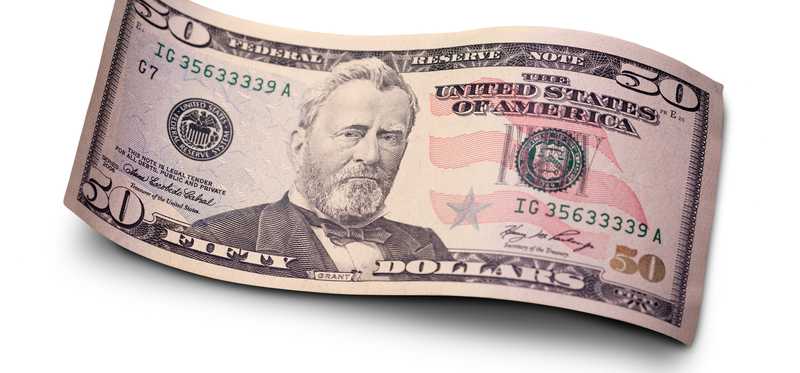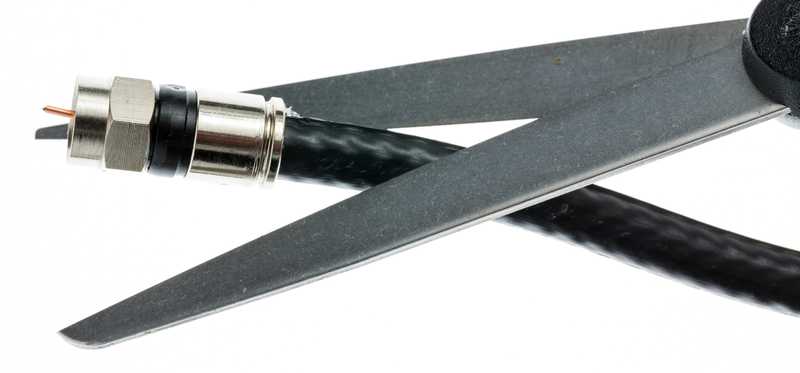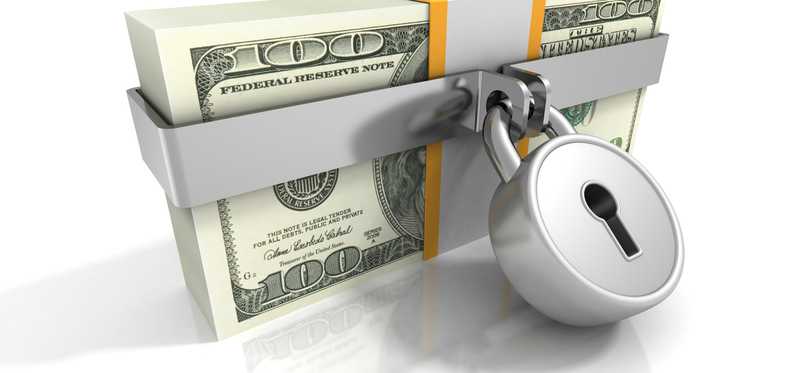20 Easy Ways to Save an Extra $50 a Week

20 Easy Ways to Save an Extra $50 a Week
Small changes equal big bucks
Even if you know you need to sock away more money for your future, it can be hard to figure out just how to do that -- especially if it seems that your paycheck is easily consumed without your living a particularly lavish lifestyle.
Here, then, are 20 ideas to get you started. Each can save you about $50 per week on average, which will net you $2,600 per year -- or more. It's not all you should be saving each year, but it's a good beginning, or a way to boost your current saving rate. Click through to see how many of these ideas you can use. If just four of them work for you, that's more than $10,000 saved!
Previous
Next

1. Cut the cable cord
The average cable and satellite TV bill was recently around $100, which costs typical consumers about $1,200 annually, a quite significant sum. Worse, it has been rising at a rate faster than inflation, with the folks at S&P Global Market Intelligence estimating that it now costs about 2.5 times what it did a decade ago. It's not surprising, then, that many people are "cutting the cord" -- and you could be one of them, choosing to stream video instead. As an example, you might subscribe to Netflix, Hulu, Amazon Instant Video, and HBO -- for less than $50 per month. Want ESPN? It's coming out with its own streaming service for about $5 per month soon. There are also a bunch of bundled TV streaming packages, such as Sling TV and the upcoming Hulu with Live TV, each of which cost about $40 or much less and offer a range of cable channels.
ALSO READ: More People Are Cutting the Cord Than Ever Before
Previous
Next

2. Pay off some debt
Another way to save serious dollars each month is to pay off some debt. For example, if you owe $10,000 on credit cards and are being charged 25% interest, you're paying about $2,500 per year just in interest, roughly $200 per month. Pay off at least $2,500 of your debt and you'll save yourself some $625 in annual interest payments, or around $52 per month. If you don't have credit card debt but do have a mortgage, you might make extra payments on that balance. It won't reduce your monthly payments, but it can shave years off your loan and save you gobs of interest. Whenever you're paying down debt, target your debt with the highest interest rates first. Paying off something on which you're being charged 20% interest is like earning a 20% return -- a return you'd be hard-pressed to find elsewhere.
Previous
Next

3. Skip one dinner out
Most of us are rather busy in our lives and the thought of coming home to cook dinner can be an unwelcome one. If you, like many people, eat out one or more nights per week, consider skipping one of those nights. Such meals can easily total $50, when you add in a beer or wine or two and the tip.
So what about dinner? Well, make it easy on yourself. Slow cookers have become more popular lately for good reason: They let you plop in some ingredients, such as meat and vegetables, before you head out to work -- and when you come home, your dinner is mostly ready (plus the house smells great). There are plenty of other quick possibilities, too, such as pasta or burgers or a roasted chicken. Another idea is to make enough for two or three meals when you prepare one meal. Then freeze the other portions for future dinners.
Previous
Next

4. Don't spend your raise -- or your tax refund
Many of us get an annual increase in our salaries, even if it's just 2% or 3%. Still, if you're earning, say, $75,000 and you get a 3% raise, that's $2,250 -- or about $43 per week. You may get a bonus instead or in addition to that. Whatever your annual increase is, consider sweeping it immediately into your savings and not using any of it. After all, you're probably managing to cover your expenses at your current income level. If so, keep doing so and you'll be able to save a meaningful sum painlessly.
This strategy probably isn't one you can use for too many years in a row, as your various costs will increase over time, requiring a greater income. But using it for several years in a row can be quite effective. A variation on this is socking away your annual tax refund, if you get one.
Previous
Next

5. Clip coupons and look for sales and promo codes
You may not envision yourself as someone who clips coupons and hands them to the cashier at the supermarket, but such folks, as well as those who try to buy items on sale, can save a lot. You might, for example, save $5 per week via coupons at the grocery store and another $10 by buying items that are on sale there. When shopping online, don't check out until you've searched in your browser for coupon codes. You'll often turn up a code that might save you 10% or more on your purchase. These kinds of actions can total $50 per week if you do a lot of shopping.
The book 13 Things Rich People Won't Tell You: 250+ Tried-and-True Secrets to Building Your Fortune by Saving and Spending Smarter notes that, "Millionaires pay about $16 -- including tip -- for a haircut at a traditional barbershop, according to the University of Georgia Survey Research Institute. About 50% of the millionaires surveyed bought wine that costs around $10."
ALSO READ: 5 Grocery Hacks to Save You Big Bucks
Previous
Next

6. Don't look for great deals
Here's some advice that seems to go against the previous suggestion to seek out sales and discounts: Don't look for great deals. Many of us have some websites we check now and then, looking for great deals. Or we may receive daily or weekly emails from retailers we frequent, promoting big discounts on various items. We may also regularly flip through the circulars in the Sunday newspaper. These are dangerous things to do because they can lead us to buy things we don't really need and are fine living without.
You may already have a decent humidifier, so you don't need to pounce on a great deal for another one. You may be impressed with the 50%-off price on some winter jacket, but if you don't need that jacket, you're not saving money as much as you're spending it.
Previous
Next

7. Trade babysitting services with friends
If you have young children, you're probably aware of how costly babysitting services can be. The national average babysitting rate was about $14 per hour in 2016, according to the Care.com 2017 Babysitter Survey. That varies by location, of course. In San Francisco, the average rate was recently $15.75 per hour, while it was $10.25 per hour in Salina, Kansas. A four-hour evening out can easily total more than $50 in many parts of the country.
One way around this expense is to exchange babysitting services with fellow parents. You might offer to babysit your child's friend one night a week and in exchange, have that child's parents babysit your own urchin one night a week. It's win-win!
Previous
Next

8. Skip that evening at the movies
The average price of a movie ticket was about $9 in 2017, and seeing a popular movie in many places can cost $12 or more per stub. On top of that, a large popcorn will likely cost you around $9, plus around $6 for a drink. A couple going out to the movies can easily spend $25 just on tickets, plus another $15 or $20 on snacks and drinks. If we're talking about a family of four, the costs can be much higher.
Skip the trip to the movie theater and stream a movie at home, instead. Even if it's one you pay for, you may only be paying $5 or less. Alternatively, there might be a discount theater near you showing movies that have been out for a few weeks or months for just $2 or $3 per person. Or you might enjoy free movies nights at your local library or community center, which can be much more social events than simply sitting in the dark with lots of strangers or hanging out at home watching a movie on TV.
ALSO READ: Over 100 Years of Average Movie Ticket Prices in 1 Chart
Previous
Next

9. Contribute to retirement accounts
You might not think of contributions to retirement accounts as a way to save money, but they can be. Remember, for example, that when you contribute to traditional IRAs and 401(k) accounts, you get to subtract the amount of your contribution from your taxable income and that sum won't get taxed for the contribution tax year. (It will be taxed as ordinary income to you when you make withdrawals in retirement -- and you might be in a lower tax bracket then, too.)
So if you contribute the $5,500 maximum to a traditional IRA (those 50 or older can contribute $6,500) and you're in a 24% tax bracket, you're looking at savings of $1,320, or about $25 per week. 401(k) accounts, meanwhile, have higher contribution limits -- for 2017, it's $18,000 and for the 2018 tax year, $18,500 -- plus, for both years, an additional $6,000 for those 50 or older. Sock away $10,000 in a traditional 401(k) and you can avoid paying $2,400 in taxes if you're in a 24% bracket -- that's $46 per week. (Roth IRAs and 401(k)s are well worth considering, too. They offer no upfront tax break, but let you withdraw money in retirement tax-free.)
Previous
Next

10. Brown bag your lunch
If you're used to grabbing a lunch from a local eatery on most weekdays, you may well be paying, say, $7 for a sandwich or burrito and $3 for a drink, for a total of around $10 per day. That can seem harmless enough coming out of your wallet, but it really adds up. That's $50 per work week, and can total $2,500 or more per year.
If you brown bag it each day, and bring homemade coffee in a thermos, you can save big bucks over the long run. Yes, brown bagging isn't free, but it can cost much less if you're just making sandwiches with cold cuts and including a piece of fruit and maybe a salad.
Previous
Next

11. Buy a used car, not a new one
Another way to save a bundle is to buy a used car instead of a new one. It doesn't have to be an 11-year-old model, with 177,000 miles on it. Just opting for a one- or two-year old car can cost you a lot less. As an example, a visit to Kelley Blue Book's website recently showed that a 2018 Toyota Camry (the lowest-priced style with standard options) could be had for a fair purchase price of $22,751, while a similar 2016 model with typical mileage had a fair purchase price of just $14,641 -- fully $8,110 less.
An online car loan calculator estimated monthly payments of $410 for 60 months for the new car and $264 for the used one. (It assumed an interest rate of 3.11%.) That's a savings of $146 per month, or about $33 per week. Remember that insurance and taxes will be lower for the older car, too. The calculations aren't quite that simple, but buying a slightly used car can save you a lot.
Previous
Next

12. Quit smoking
If you smoke regularly, you are not only putting your health at risk, but you're also burning up a lot of money that could otherwise be spent on retirement savings or other financial goals. The national average price for a pack of cigarettes was recently about $6.16, with the cost varying widely by region, largely due to taxes. In New York City, for example, where people recently paid an average price of $11.23 per pack, the minimum price is going up to $13.
The math is easy to do. Let's use the $6 price. If you smoke one pack a day at that price, it's costing you $42 per week, or $2,190 per year. Smoke two packs a day? That's a whopping $84 per week and $4,380 per year. Sure, lots of smokers enjoy lower prices than that $6, but lots of people pay much more, too. Imagine that you're paying $10 per pack. That would cost you $70 per week or $3,650 per year. Two packs? $7,300! If you're a denizen of New York City, you're looking at $91 per week just for a pack a day, amounting to $4,745 per year. Quitting smoking will not only boost your health, but it will also fatten your wallet.
Previous
Next

13. Skip the drinks
When at a restaurant, if you opt for water instead of a $3 soda, lemonade, or coffee, or a $5 beer, $7 wine, or $10 mixed drink, you can keep meaningful dollars in your pocket. That can be easier said than done, though, because many people really do enjoy those drinks. Imagine, though, that you down two margaritas at a restaurant, or three beers. If you cut that down to just one drink, you might save $10.
Think about cost savings with all drinks, even bottled water. A bottle of water often costs $2 or more and if you buy one two or three times a week, that's $4 to $6 per week, and $200 to $300 per year.
Previous
Next

14. Keep little cash in your wallet
Another way to save a significant sum of money each week is to not keep much cash in your wallet. If you don't have a lot of money on you, you won't be able to spend it impulsively -- on a drink, a book, a magazine, a candy bar, or anything that catches your eye.
As an example, many magazines cost $7 or more per issue these days -- it can be far more cost effective to just subscribe to the magazines that interest you most. You could recently buy a single issue of Time magazine for $5.99, Rolling Stone for $6.99, Fortune for $5.99, or The New Yorker for $8.99. If there are magazines that greatly interest you, consider subscribing. The keep-little-cash strategy isn't good for everyone, but it could work for you.
ALSO READ: You Won't Believe What the Average American Spends on Impulse Buys
Previous
Next

15. Leave the plastic at home -- or don't use it at all
Now that you've been advised to keep little cash on you, here's an opposing strategy: Don't carry credit cards -- instead aiming to pay for many or most things with cash. Why? Well, credit cards tend to make many people spend more, probably because swiping a piece of plastic through a machine doesn't feel as financially meaningful as handing over some hard-earned paper currency. A Dun & Bradstreet study, for example, found that people spent 12% to 18% more when using charge cards than when paying in cash. And McDonald's (NYSE: MCD) at one time reportedly observed customer tickets rising from an average of $4.50 to $7.00 when they used plastic instead of cash.
Previous
Next

16. Negotiate a lower interest rate on your credit card
Here's an extremely painless way to save a lot of money -- if you're saddled with a lot of credit card debt: Ask the credit card company to lower your interest rate. If you've been a good customer, there's a good chance they will -- really! According to a report by CreditCards.com, 69% of cardholders who asked for a lower interest rate got one.
Your rate may ridiculously high if you paid just a single bill late and were slapped with an automatic "penalty APR." Many cards -- but not all -- feature the penalty APR, which can hike your rate to 25% or even around 30% after a single late payment. If you're carrying $20,000 in debt and are being charged, say, 26% on it, you're being charged $5,200 per year in interest alone! It can be hard to pay off your balance in such a situation. If you can get that rate down to a more typical rate, such as 16%, you'll pay just $3,200 per year, saving $38 per week. Depending on how much you owe and the rates you're being charged and can get, you may be able to save $50 or more per week. Also consider consolidating your debt and/or using a balance transfer credit card.
Previous
Next

17. Switch from whole life insurance to term
Another way to save money painlessly is to switch your life insurance from a whole life policy to a term life policy -- or even to stop buying life insurance altogether! Life insurance is meant to protect an income stream and many people need it as they have people depending on them financially. If you're single, though, and will not be needing to support any parents or children, you may not need it at all.
If you do, though, know that term insurance, which protects you for a specified term, is usually much less expensive, and can be just what you need. If your kids will be living on their own in 10 or 20 years, for instance, you may not need to pay for life insurance for 30 or 40 years. Whole life is sold as a longer-term, more permanent protection and also as a way to invest -- but you can often achieve better results investing on your own.
How much difference is there between the two, cost-wise? Well, according to one online calculator, a 40-year-old man in standard health in Ohio who wants a $500,000 policy might pay about $8,300 annually for a whole life policy, while the cost for a 30-year term life policy would be an annual premium of just $1,230. That's a difference of about $7,000 per year, or about $136 per week.
Previous
Next

18. Use a cash-back credit card
It might be hard to save a full $50 per week with this strategy, but you can come close, and heavy spenders might exceed that. Some of the best credit cards are targeted at certain kinds of spenders. For example, you can find cards that offer up to 6% back on supermarket spending, 5% back at gas stations or retailers such as Amazon.com (Nasdaq: AMZN), or 2% back on just about all your spending. If you have a big family and spend $300 at the supermarket each week, you can get around $18 back on that. Have a long drive to and from work? If you spend $60 on gas each week, you might collect $3 back. Spending $200 on Amazon each week can yield another $8 back. Another $200 charged for other purchases could put $4 back in your pocket.
Simply signing up for certain cards, especially travel-focused ones, can get you hefty sign-up bonuses worth $500 or more. Spread out over a year, that would add another $10 per week to your credit card savings.
Previous
Next

19. Shop around for a better cellphone plan
You may be able to save a lot of money by switching to a more sensible cellphone plan. Saving $50 per week might be hard to imagine, but some families with kids who are heavy phone-users pay $200 or more per month and get whacked with overage fees each month, bringing their totals to $300 or $400 or more. By shopping around, they may be able to pay $150 or less per month.
It's actually a good idea for every consumer to shop around every few years and see if there's a better deal to be found -- especially if you're near the end of your contract. Here are some tips for picking a wireless plan:
- Start by researching which service providers offer good reception in your area -- especially your home. Ask around.
- You might be able to get a discount via your employer. Take a close look at your job benefits and perks. Seniors may receive discounts, too.
- Try calling your current provider and asking to cancel your plan. Many will try to keep you by lowering your rates.
- Consider prepaid phone plans and compare any good deal you find with that service provider's no-contract version of the deal. If you don't buy phones through your plan, you can pay less.
- Cut out non-essential features such as HD-quality video streaming and hotspots you don't use.
- Take a close look at your billing statement and make sure you're not paying for any services you're not using. You might be surprised by what your wireless provider has signed you up for.
- Try negotiating. If you tell a service provider that you're shopping around and wonder if they can beat the best deal you've found, they might!
Previous
Next

20. Pay yourself first
Finally, one of the best ways to save $50 per week is to just to take it directly out of your paycheck first, before spending any of it. This is the famous "pay yourself first" strategy, which makes saving a priority, as it should be. You might look into automated services to help you. Many employers, for example, can shuttle a portion of your paycheck directly into a separate financial account that you specify.
You will then have to get by on $50 less per week -- but you can probably do that, perhaps by employing one or more of the other 19 suggestions above.
John Mackey, CEO of Whole Foods Market, an Amazon subsidiary, is a member of The Motley Fool’s board of directors. Selena Maranjian owns shares of Amazon and Netflix. The Motley Fool owns shares of and recommends Amazon and Netflix. The Motley Fool has a disclosure policy.
Previous
Next
Invest Smarter with The Motley Fool
Join Over Half a Million Premium Members Receiving…
- New Stock Picks Each Month
- Detailed Analysis of Companies
- Model Portfolios
- Live Streaming During Market Hours
- And Much More
READ MORE
HOW THE MOTLEY FOOL CAN HELP YOU
-
Premium Investing Guidance
Market beating stocks from our award-winning service
-
The Daily Upside Newsletter
Investment news and high-quality insights delivered straight to your inbox
-
Get Started Investing
You can do it. Successful investing in just a few steps
-
Win at Retirement
Secrets and strategies for the post-work life you want.
-
Find a Broker
Find the right brokerage account for you.
-
Listen to our Podcasts
Hear our experts take on stocks, the market, and how to invest.
Premium Investing Services
Invest better with The Motley Fool. Get stock recommendations, portfolio guidance, and more from The Motley Fool's premium services.